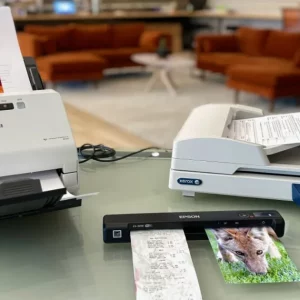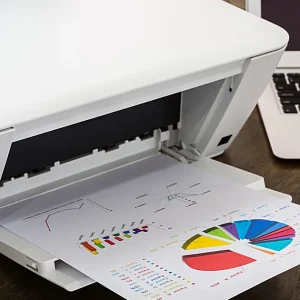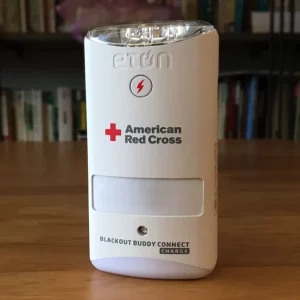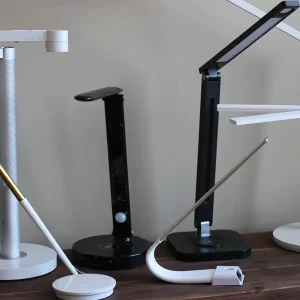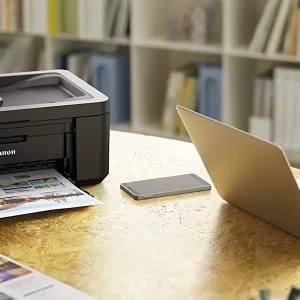Is a scanner input or output? This is a question that is often asked by people who are confused about the function of a scanner. A scanner is an input device that reads images and text from a document and converts them into digital data that can be stored on a computer.
Let’s be with Manymoon to learn more useful information through this blog post.
What Is A Scanner?

A scanner is an input device for a computer system that stores data and information in digital format.
They can convert data or information into digital format – images, text documents and Spreadsheets.
The data stored on the computer’s hard drive can be easily modified or uploaded online.
Take this example.
The scanner can be used to scan documents, and then you can email them.
Printers can be used to convert soft copy documents into hard copies, while scanners can be used to convert hard copies into soft copies that can be stored on a computer hard drive for future use.
A scanner is an input device that scans any document in image format.
They can also scan black and color paper, as well as documents. You can view, edit, and update the scanned documents on your hard drive using editing software.
This editing software lets users import and configures scan documents.
Most scanners are flatbed scanners. The scanner has a flat scanning surface that can scan documents, images, and magazines.
Although a scanner can be connected using SCSI or TWAIN, most scanners connect to the USB Universal Serial Port.
What Is An Input and Output Device?
The computer interacts with input and output devices with other people or computers. You can input data into the computer to store and process it further, while output devices will allow you to retrieve information from the computer.
What is an Input Device?
Input devices are peripheral equipment that allows you to input data into your computer. The electronic device can store information in a variety of formats, including numbers, text, images, and sounds. Input devices can convert these formats into digital forms that the computer can see (numerical and text information, graphic, audio and video information, etc.).
Input device examples:
- Scanner
- Webcam
- Digital camera
- Video capture card
- Microphone
- Digital voice recorder
- Modem
- Disk
- Keyboard
What is an Output Device?
Output devices are computer hardware that allows digital information to be displayed in a human-readable format. Monitor, printer, plotter speakers and headphones are the primary output devices.
Output device examples:
- Monitor (display).
- Projector
- Printer
- Graph plotter
- Optical drive with disc labeling functionality
- LEDs (on the notebook or system unit, e.g., for information about reading/writing the disc)
- Built-in loudspeaker
- Speakers
- Headphones
- Joystick for gaming (vibrates when you encounter an obstacle).
So, Is A Scanner Input Or Output?

Scanners are input devices. A scanner scans images and converts them to digital data before sending them to a computer. A scanner can be used as an input device because the information flows from the outside world to the computer.
Why Is A Scanner An Input Device And Not An Output?
A scanner is an input device. It is a piece that gathers information about an object and then converts it into a format that the computer can understand. The scanner scans the thing and then tells the computer what to do. The output is the scan, also known as a digital copy of the object.
How Does A Scanner Work As An Input Device?
Scanners can be thought of as digital cameras. Both scanners and digital cameras create images by recording light that is reflected or transmitted from the original object. Flatbed scanners read ideas by using light reflected from photographs.
Digital cameras can also create portraits or landscapes by recording light reflected off a person, mountain, tree, or another object. To digitize film, the scanner uses light that passes through it. This is what happens when you photograph translucent things, such as dirty windows in a digital camera. From this perspective, scanners and cameras look very similar.
However, they do have some differences when it comes to recording the image. Digital cameras can instantly capture the entire image using a variety of sensors that have a certain number of pixels in depth and width (e.g., 2048×1536 pixels). Scanners scan; pardon the pun. The sensors are composed of one row of light-sensitive elements. They scan one line of dots at a time, then run through the entire image in order until it is complete.
Flatbed scanners can scan film, and special scanners designed to handle film have much less in common. Both scanner types work on the same principle but differ in the arrangement of parts within the scanner.
Scanner Types

Flatbed Scanner
Flatbed scanners are the most popular scanner family and can be found both at home or on a professional’s workstation. The original is placed on top of the glass. The optical unit then moves under the glass. Finally, the cover or slide module is applied to the glass. Some models can take three-dimensional originals, as their optics provide a substantial depth of field and have autofocus.
Some models include a tray that can be used to scan slides. This is a significant advantage over the traditional slide module that has a scanner cover. The light passing through transparent originals does not go through additional glass and therefore is less scattered.
Flatbed scanners are the most versatile tools and can be used for all tasks. Reputable manufacturers make reliable and simple-to-use models that are easy to set up and use. You can modify the scanner to suit almost any purpose and need.
Handheld Scanner
A handheld scanner can be used to scan originals with small dimensions or the surfaces of large objects. Their primary advantage is their portability. The handheld scanner can be unplugged and stored in a drawer until it is needed. The handheld scanner is small enough to be used in a limited space. Because of their small size and easy connection, handheld scanners are indispensable for PC and laptop users.
To scan a document to a handheld scanner with a scanning head, you must move the scanner head slowly over the image. The user is responsible for moving the scanner head relative to the paper. The quality of the image entered into the computer is greatly affected by the scanner’s movements. Some models include a particular indicator that confirms regular input.
Sometimes the scanner’s working area is too small to be able to scan the document. These situations are where two sides-by-side scans of the original document are done. Special programs are then used to “glue together” the images. Some programs can rotate an image by several degrees if the scanner is accidentally deflected from the line of motion. Advanced systems can also “glue” the stripes together by making small rotations.
Drum Scanner
This scanner is intended for professional use. The drum scanner uses a flexible sheet, which is attached to the surface of a transparent cylindrical (drum). This rotating speed ranges from 300 to 1350 RPM using special tape or oil. The scanning receiver then reads the image pixel-by-pixel with high precision. A light source is used to scan transparent originals. For scanning reflective originals, it is located outside of the drum.
Image drum scanners have an optical resolution of up to 24000 PPI (pixels/inch). The drum’s rotation speed is high enough to allow for the focus of a potent light source without causing damage to the original. The brightness of the light source, the ability to adjust the focus and element-by-element sampling tech ensure a high signal-to-noise ratio and precise image tones without any crosstalk from neighboring pixels.
Drum scanners can be expensive, starting at $20000. They produce high-quality images that can be used to retouch, color separate, and finally, create the final representation of the publication page (or film for offset printing).
Leafet Scanner
By design and operation, leaflet scanners look like fax machines. They can also be used to verify the authenticity of banknotes. Special rollers pull the original inside and scan it as it passes through a light-sensitive matrix.
These scanners can be used in offices to scan and recognize text. They are also used to scan simplified graphics, such as letterheads and business cards. To digitize X-rays or medical records, unique models are used in medicine.
The scanners are affordable and small, making them an excellent investment for a paperless workplace. However, scanning from a book or magazine can be difficult. Many models come with a document feeder or can be removed from the stand to allow the scanner to be rolled horizontally.
These scanners can be dangerous. They quickly leap off tables, and it can be challenging to catch them.
Planetary Scanner
The planetary scanners can be used to digitize various stapled materials professionally. The planetary color scanner can quickly digitize books and magazines, newspapers, magazines, catalogs, newspapers, and other stapled materials. The scanner creates high-quality electronic images from the originals.
The planetary scanner’s advanced deep auto-focus technology allows for digitization of originals of high quality, regardless of their format or thickness. Non-contact scanning prevents any damage to original material during digitizing.
Grayscale scanning dynamically binarizes images with the best preservation of details. It compresses the data and converts it into the industry-standard TIFF G4 form.
Grayscale (256 grayscale) or color scanning are all possible image formats. The scanned image will be of high photographic quality, thanks to the grayscale and color modes. The resulting files can be used for archiving or auto-recognition.
The unique software and the scanning unit allow for high-quality copies of originals with minimal operator intervention. Software included with the scanner can be used to batch scan and process images for further use in document management software.
Slide Scanner
Slide scanners are a particular version of a flatbed scanner that digitizes slides and negative film for professional photography or printing purposes. Slides or films are inserted into the receiving slots and then moved between the lamp and the lens. The output image parameters can be used for a photo book or print reproduction. These scanners are often part of a digital studio or designer’s computer. Slide scanners can be used at a resolution up to 3000ppi and a color bit rate of 42bit.
Slide scanners can scan transparent originals such as slides, films and transparencies. Many slide scanners have one or more frames that can hold slides of various sizes, types, or film fragments. You can scan your slides in batches of 50 using the batch scanning feature without operator interference.
Slide scanners have the advantage of high optical resolution. Even the most basic models can scan at least 2000ppi.
Barcode Scanner
Barcode scanners – devices that read barcodes and transmit the information to a computer.
They are classified based on their performance (stationary, handheld, combined) and the type of backlighting they use (requiring no backlighting LED or laser). These two types are then divided into laser and LED. You can also classify them using other features and characteristics of the devices, such as scanning speed, autonomy, distance, etc.
It is essential to consider that not every scanner is the best. Every scanner is made for a particular model and operation format. Naturally, supermarkets will require different scanners than boutiques.
Check out our comparison of two technologies scanner: CCD vs CIS scanners
How Do Scanners Get Connected To A Computer As An Input Device?
First, plug your scanner’s power cord into a wall socket. Next, plug it into your scanner. The USB cord from the scanner must be plugged into an available USB port on your computer. After the USB cable has been drilled into, please turn on your scanner by pressing the button at the top for ten seconds until it sounds twice (or as standard).
Where Can A Scanner Be Used As An Input Device?
You can use scanners in many places, including schools, hospitals, restaurants, and offices. Because they can be used to send or input information to one system, they are also considered input devices.
Input devices Similar To A Scanner
Other input devices that are similar to scanners include, but are not limited to Camera: A scanner or a photographer can scan a document to capture it and then digitize it.
Digitizer: An input device capable of turning physical objects into digital information.
Digital pen: An input device capable of digitizing handwriting and turning it into a digital format.
Can A Scanner Be Used As An Output Device?
Scanners can be used as input devices and not output devices.
Scanners are input devices that convert physical images into digital images. The scanner scans the image, then converts it into a digital image that can be viewed on any computer or mobile device. Scanners can be used to scan documents, photos, barcodes and artwork to create digital files.
